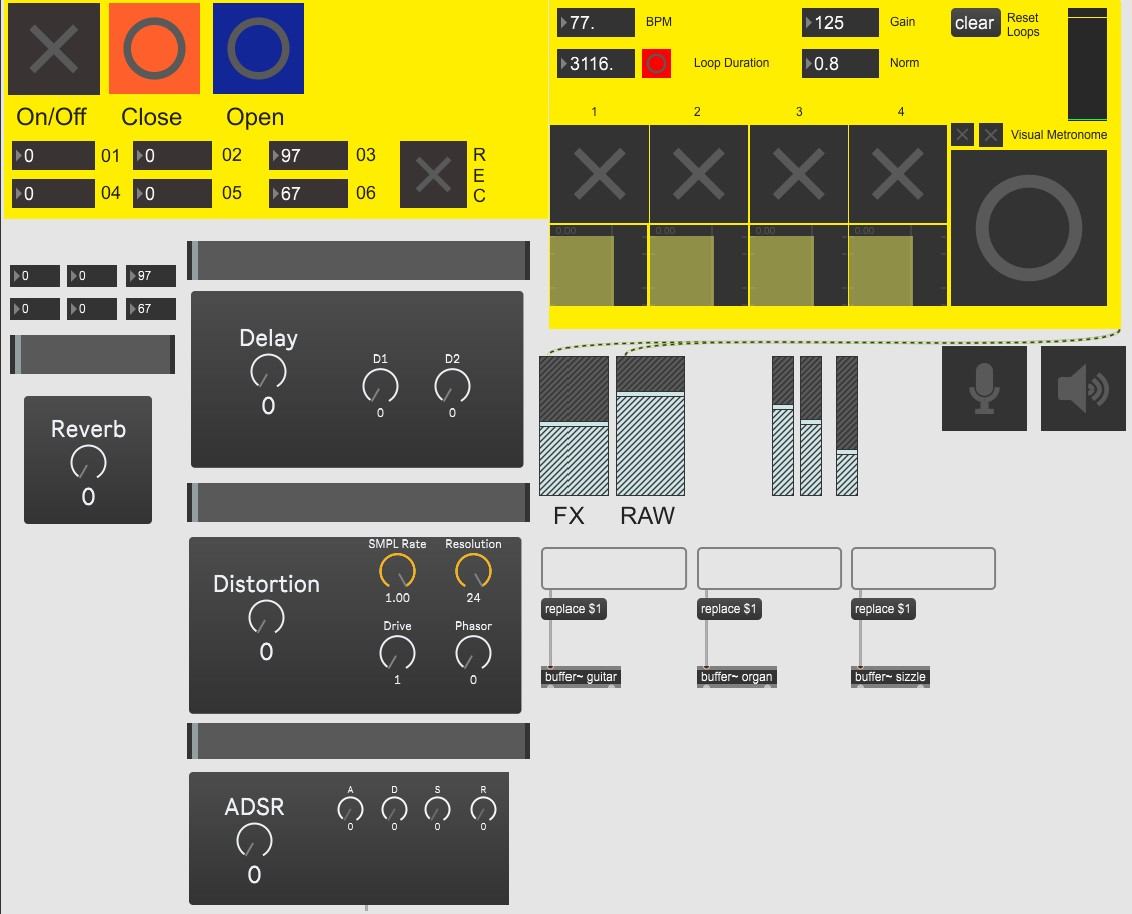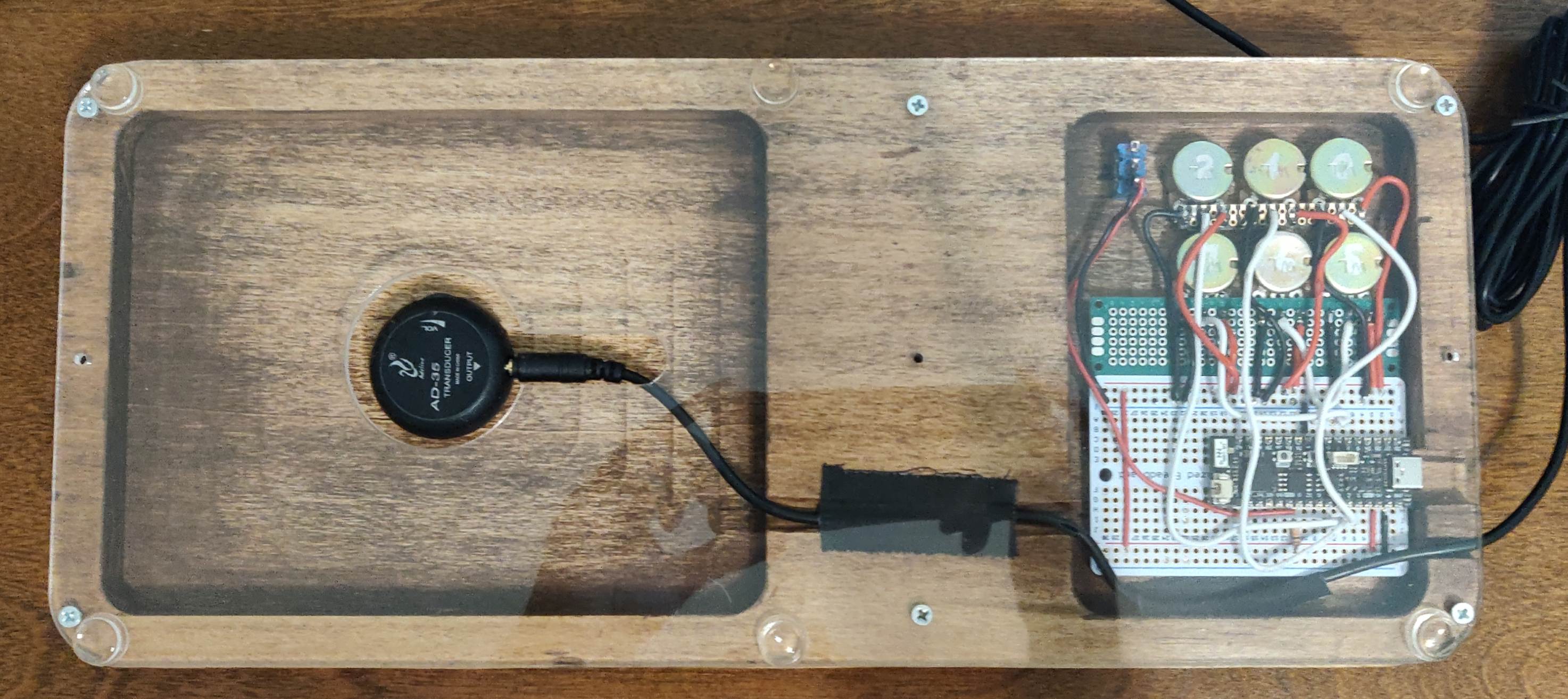The Cutting Board
Completed: 10 June, 2023
The Cutting Board is a live looping musical instrument that uses a contact microphone embedded into a piece of wood to produce sound. The Cutting Board works by picking up vibrations from the wooden board and sends them to an audio interface that is connected to the musical software MAX 8. MAX 8 is a visual programming language that allows users to create their own sounds and instruments. The sounds produced on the wooden board can be looped into four different track. The idea is that each track represents a different percussive instrument in a drum kit, but the exact sound can be created by the user.
Along with this looping mechanism, there are six potentiometers that can be used to change the quality of the sound on the fly. These potentiometers are associated with food terms that are used both in cooking and in music. I was inspired by the idea that every song has its own recipe to follow in order to create a unique sound. The potentiometers are like values you can tune within a dish. Lacking in spice? Add some in! Tasting a bit unsalted? Add some salt in! The potentiometers are associated with the following terms:
Reverb - Depth / No-Depth
Delay - Sharp / Aftertaste
Distortion - Sweet / Salty
ADSR - Soft / Hard
Bandpass Filter - Hot / Cold
Saturation - Bland / Spicy
Design
The design for the Cutting Board can be broken down into three main steps. The first step is the mechanical design, which involved cutting, shaping, and carving a piece of wood into a usable shape. The second step is the electrical design, which involved choosing a board and microcontroller to use, wiring the potentiometers to the board and soldering them in place. I also added in a switch which would act as a toggle for looping. The third and final step was to create software that could interface with the microcontroller and the contact microphone and send those signals to MAX.
Mechanical
The Cutting Board started with a wooden board that I cut down to 6" x 14". I then routed the edges to give it a more finished look. I then utilized a mill to carve out two spaces, one for the electronics to fit and another for the contact microphone. Below is the board after it was cut, routed, and sanded down to size.
Electrical
I utilized Unexpected Maker's PRO S3 to send information from the Cutting Board to my computer. This uses an ESP32 microcontroller which has wireless capabilities and utilizes as 12-bit ADC. In future work I could potentially make the Cutting Board wireless, but for now it connects directly to a computer. I used six potentiometers and a switch to tune the above-mentioned parameters that are associated with a food quality. Below is an image of the back of the Cutting Board. I used a piece of clear acrylic to cover it so that the user could see the electronics inside.



